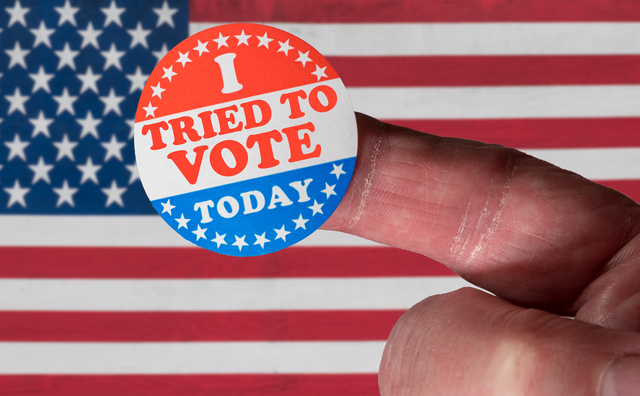 Credit:BackyardProduction/iStock
Credit:BackyardProduction/iStockAs many state legislatures consider weakening voter protections and Congress debates new voting rights laws, recent research from the University of California San Diego’s Rady School of Management reveals that the 1965 Voting Rights Act contributed to improvements of the economic status of Blacks. Conversely, after the Supreme Court rendered the Voting Rights Act ineffective in 2013, it led to economic disenfranchisement for Black families that continues to persist.
“This research reveals the weakening of minority political power brought on by the 2013 Supreme Court decision made the government less responsive to minorities’ policy demands,” said Carlos Fernando Avenancio-León, assistant professor of finance at the Rady School of Management.
Avenancio-León is co-author of two papers that together measure the effect the Voting Rights Act (VRA) had on social and economic equality after the federal legislation was passed in 1965 and until a key provision in the act was struck down by the Supreme Court’s 2013 decision in Shelby County v. Holder. The research is the first to assess the VRA’s direct impact on economic inequality.
The first study, a working paper, finds counties where voting rights were more strongly protected experienced larger reductions in the Black-white wage gap between 1950 and 1980. The second paper, published in the journal American Economic Association Papers and Proceedings, presents evidence that counties previously covered by the VRA started seeing a decrease in public sector wages for Black workers relative to wages for white workers, especially for new hires, as early as five years following the 2013 Supreme Court decision.
“The VRA reduced economic inequality between Blacks and whites in two ways, first it contributed to the expansion of public employment opportunities,” said Avenancio-León. “And, second it contributed to and complemented the enforcement of labor market policies such as affirmative action and anti-discrimination laws.”
 Carlos Fernando Avenancio-León
Carlos Fernando Avenancio-LeónBoth papers by Avenancio-León and his co-author Abhay Aneja of UC Berkeley focus on section five, which is core to the VRA. It gave the federal government oversight over changes in practices or procedures in counties with histories of racial discrimination. These counties had to prove a proposed change did not deny or abridge the right to vote on account of race, color, or membership in a language minority group. This key provision was invalidated after the Supreme Court issued its decision in Shelby County v. Holder. Chief Justice John Roberts cited the reasoning in the court’s opinion that “things have changed dramatically” in the South.
Avenancio-León says his research reveals the VRA was able to empower Black families economically—decreasing the wage gap by a statistically significant 5.5 percentage points—because it changed the political preferences of politicians.
He and Aneja’s results are based on wage comparisons between Blacks and whites in counties where the VRA was enforced before and after the legislation was passed. Their analysis of the wage gap after section five of the VRA was rendered ineffective compares trends in the Black/white wage gap in pairs of counties that share a border, where one county was previously covered by section five and the other was not.
Their research also measures voter turnout. The authors find that section five increased turnout from 1968 to 1980 by 6.5 to 11.5 percentage points per election, with a jurisdiction’s turnout increasing by 2% for every 10% increase in its population share that was Black.
The authors conclude that understanding the effects the VRA has on political representation and economic progress is critical as policymakers debate the merits of voting rights.
As of January 14, 2022, legislators in at least 27 states have introduced, pre-filed, or carried over 250 bills with restrictive provisions, compared to 75 such bills in 24 states on January 14, 2021. In the 2021 legislative sessions, more than 440 bills with provisions that restrict voting access were introduced in 49 states.
These enacted and proposed laws include vote-by-mail restrictions, restrictions on early voting and broader authority for purges of voter rolls.
“We hope that the evidence in our research is informative for lawmakers,” said Avenancio-León and Aneja. “In an era of increasing income inequality, it is worth considering the role of minority political disempowerment.”
Avenancio-León and Aneja’s papers, “The Effect of Political Power on Labor Market Inequality: Evidence from the 1965 Voting Rights Act” and “Disenfranchisement and Economic Inequality: Downstream Effects of Shelby County v. Holder” can be accessed respectively at this link and this link.
UC San Diego’s Studio Ten 300 offers radio and television connections for media interviews with our faculty, which can be coordinated via studio@ucsd.edu. To connect with a UC San Diego faculty expert on relevant issues and trending news stories, visit https://ucsdnews.ucsd.edu/media-resources/faculty-experts.
